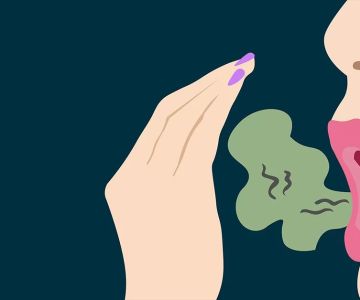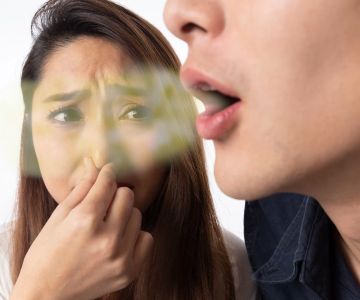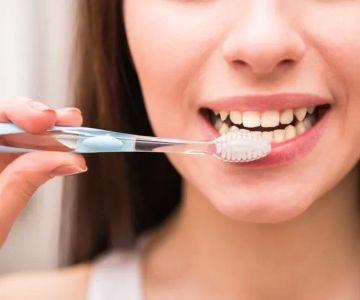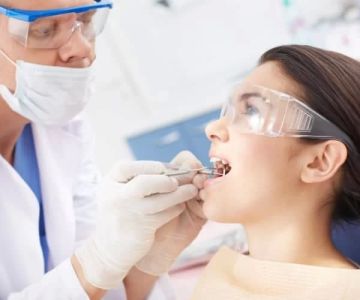Enhancing Your Oral Hygiene: Simple Tips for a Healthier Smile
Taking care of your teeth and gums is essential not only for a beautiful smile but also for your overall health. Poor oral hygiene can lead to serious dental problems, such as cavities, gum disease, and even heart disease. Fortunately, improving your oral hygiene doesn't require drastic changes—just a few simple, consistent practices can make a significant difference. In this article, I'll share effective tips and personal insights on how to better your oral hygiene and maintain a healthier mouth.
1. Brush Your Teeth Properly: The Foundation of Oral Hygiene
Brushing your teeth is the most fundamental aspect of oral care. While it may sound simple, brushing correctly is key to removing plaque and preventing tooth decay. Many people rush through brushing or use improper techniques, leading to ineffective cleaning.
1.1 Choose the Right Toothbrush and Toothpaste
Start by selecting a toothbrush that suits your needs. I recommend using a soft-bristled toothbrush, as it’s gentle on your gums while still effective at cleaning your teeth. Electric toothbrushes are also an excellent choice, as they can provide a more thorough clean compared to manual brushing.
When it comes to toothpaste, look for a fluoride-based option. Fluoride helps prevent tooth decay by strengthening tooth enamel. If you have specific concerns, such as sensitivity or tartar buildup, there are special toothpastes designed to address these issues.
1.2 Brush Twice a Day for Two Minutes
Brush your teeth at least twice a day—once in the morning and once before bed. It's crucial to brush for two minutes to ensure you're covering all surfaces of your teeth. Use gentle, circular motions rather than harsh scrubbing, as this can damage your enamel and gums. Don't forget to brush your tongue as well, as bacteria can accumulate there, leading to bad breath.
2. Flossing: The Forgotten Hero of Oral Hygiene
Flossing is often overlooked, yet it plays a critical role in removing food particles and plaque from between your teeth, where your toothbrush can't reach. Skipping flossing can lead to gum disease and cavities between your teeth, even if you're brushing regularly.
2.1 Choose the Right Floss for You
There are various types of dental floss available—waxed, unwaxed, flavored, and even floss picks. Choose the one that feels most comfortable and effective for you. Waxed floss is often easier to slide between tightly spaced teeth, while unwaxed floss may provide a slightly better grip for removing debris.
2.2 Floss Once a Day
Make flossing a part of your daily routine. It only takes a few minutes and can make a world of difference in your dental health. If you're not sure how to floss properly, here’s a quick guide: take a piece of floss about 18 inches long, wrap it around your fingers, and gently slide it between your teeth in a back-and-forth motion. Make sure to curve the floss around each tooth and go beneath the gumline.
3. Rinse with Mouthwash for Freshness and Protection
Using mouthwash is a great way to freshen your breath and provide extra protection against cavities and gum disease. Mouthwash helps remove remaining food particles and bacteria after brushing and flossing, giving you that extra boost of cleanliness.
3.1 Choose the Right Mouthwash
There are two main types of mouthwash: cosmetic and therapeutic. Cosmetic mouthwashes are designed to freshen your breath but don’t provide long-lasting protection. On the other hand, therapeutic mouthwashes contain active ingredients that help reduce plaque, prevent gum disease, and fight cavities. Look for mouthwashes that contain fluoride or antimicrobial agents like chlorhexidine for added benefits.
3.2 Use Mouthwash Correctly
Use mouthwash after brushing and flossing. Swish the mouthwash around your mouth for about 30 seconds to one minute, ensuring it reaches all areas of your mouth. Avoid eating or drinking for at least 30 minutes after using mouthwash to allow the active ingredients to work effectively.
4. Regular Dental Checkups: A Key to Maintaining Healthy Teeth
Even with great at-home oral care, it’s important to visit your dentist regularly. Dental checkups help detect problems early, such as cavities, gum disease, and oral cancer. They also provide an opportunity for professional cleanings to remove plaque and tartar buildup.
4.1 Visit Your Dentist Twice a Year
Most people should schedule dental checkups every six months. During these visits, your dentist will perform a thorough examination and cleaning. If you’re at higher risk for dental issues (due to factors like smoking, diabetes, or a family history of oral health problems), your dentist may recommend more frequent visits.
4.2 Early Detection of Issues
One of the most valuable aspects of regular dental visits is the early detection of oral health problems. Catching issues like cavities, gingivitis, or even early-stage oral cancer can save you from more extensive and expensive treatments down the road. Dentists can also provide personalized advice on improving your oral hygiene routine based on your specific needs.
5. Healthy Diet and Lifestyle Choices for Better Oral Health
Your oral hygiene is directly influenced by what you eat and how you live. Eating a balanced diet and avoiding harmful habits can go a long way in protecting your teeth and gums.
5.1 Eat a Balanced Diet
Foods rich in calcium, vitamin D, and phosphorus are essential for strong teeth. Dairy products like milk and cheese, leafy greens, and fish are excellent choices for promoting oral health. Avoid sugary snacks and beverages, as they can lead to plaque buildup and cavities.
5.2 Avoid Smoking and Limit Alcohol Consumption
Smoking and excessive alcohol consumption can increase your risk of gum disease, tooth decay, and oral cancer. If you’re looking to improve your oral health, quitting smoking and moderating alcohol intake are crucial steps.
6. Stay Hydrated for Optimal Oral Health
Drinking water is not only important for your overall health, but it also helps keep your mouth hydrated. Saliva is essential for washing away food particles and neutralizing acids produced by bacteria in your mouth. Staying hydrated promotes healthy saliva production and helps maintain a fresh mouth.
6.1 Drink Water Throughout the Day
Aim to drink plenty of water throughout the day, especially after meals. This will help rinse away food particles and prevent dry mouth, which can lead to bad breath and an increased risk of cavities. If you can, avoid sugary drinks like soda and opt for water as your primary beverage.







 Westgate Dental Arts
Westgate Dental Arts Coventry Family Dental
Coventry Family Dental Familia Dental
Familia Dental Dr. Daniel S. Fife, DDS
Dr. Daniel S. Fife, DDS Dentistry At Suburban Square: Michael I. Wollock, DMD
Dentistry At Suburban Square: Michael I. Wollock, DMD Comfort Care Dental
Comfort Care Dental The Importance of Oral Health Education During Pregnancy for a Healthy Pregnancy
The Importance of Oral Health Education During Pregnancy for a Healthy Pregnancy Why Skipping Dental Checkups Can Lead to Bigger Oral Health Problems
Why Skipping Dental Checkups Can Lead to Bigger Oral Health Problems Advantages of Porcelain Dental Restorations
Advantages of Porcelain Dental Restorations Best Tips for Brushing Your Teeth Properly for Healthy Gums: Essential Techniques for Oral Health
Best Tips for Brushing Your Teeth Properly for Healthy Gums: Essential Techniques for Oral Health How Can Diabetes Cause Tooth and Gum Problems? Preventing and Managing Oral Health Issues
How Can Diabetes Cause Tooth and Gum Problems? Preventing and Managing Oral Health Issues Healthy Habits for Promoting Good Oral Health and Hygiene: Tips for a Healthy Smile
Healthy Habits for Promoting Good Oral Health and Hygiene: Tips for a Healthy Smile